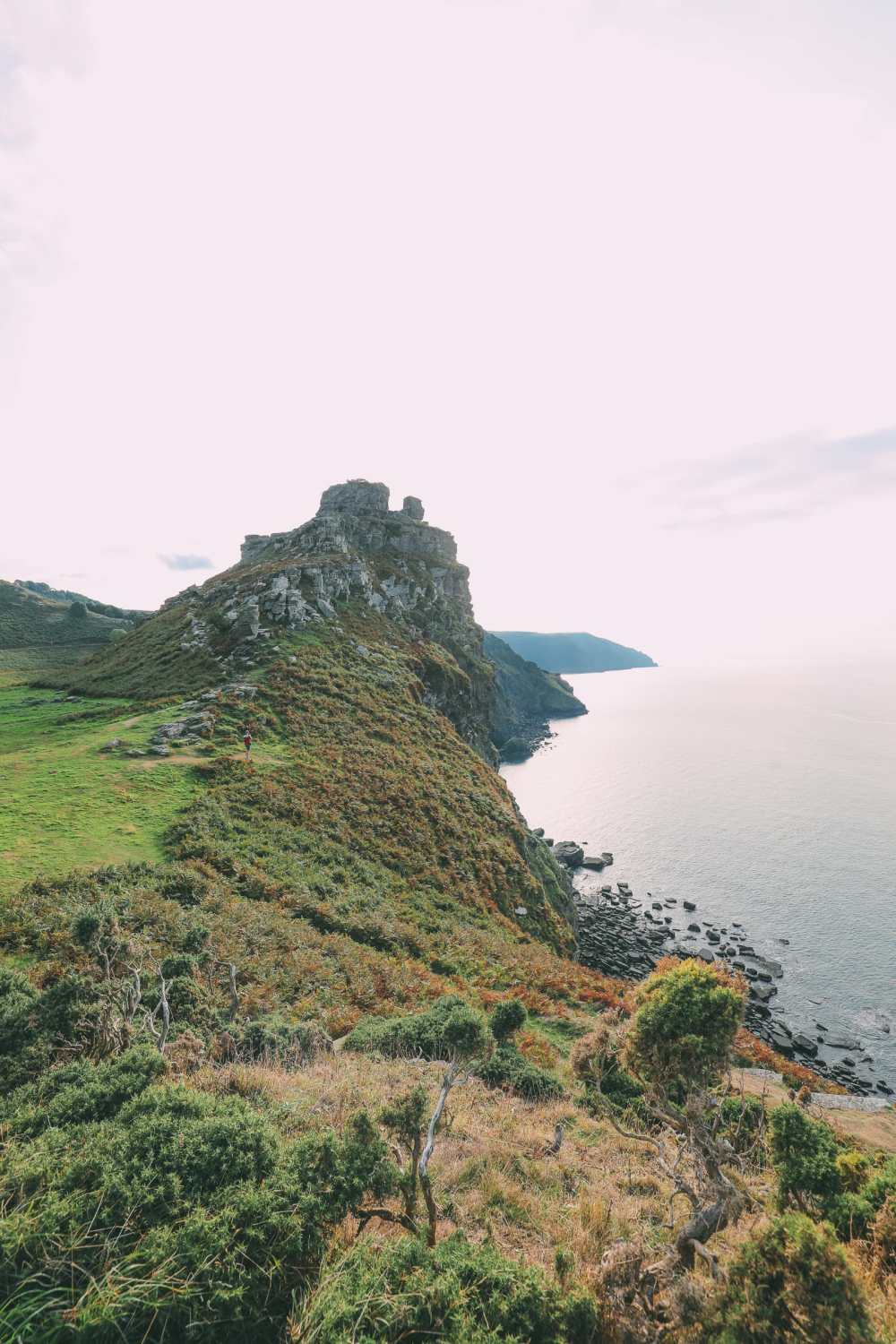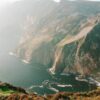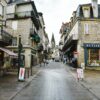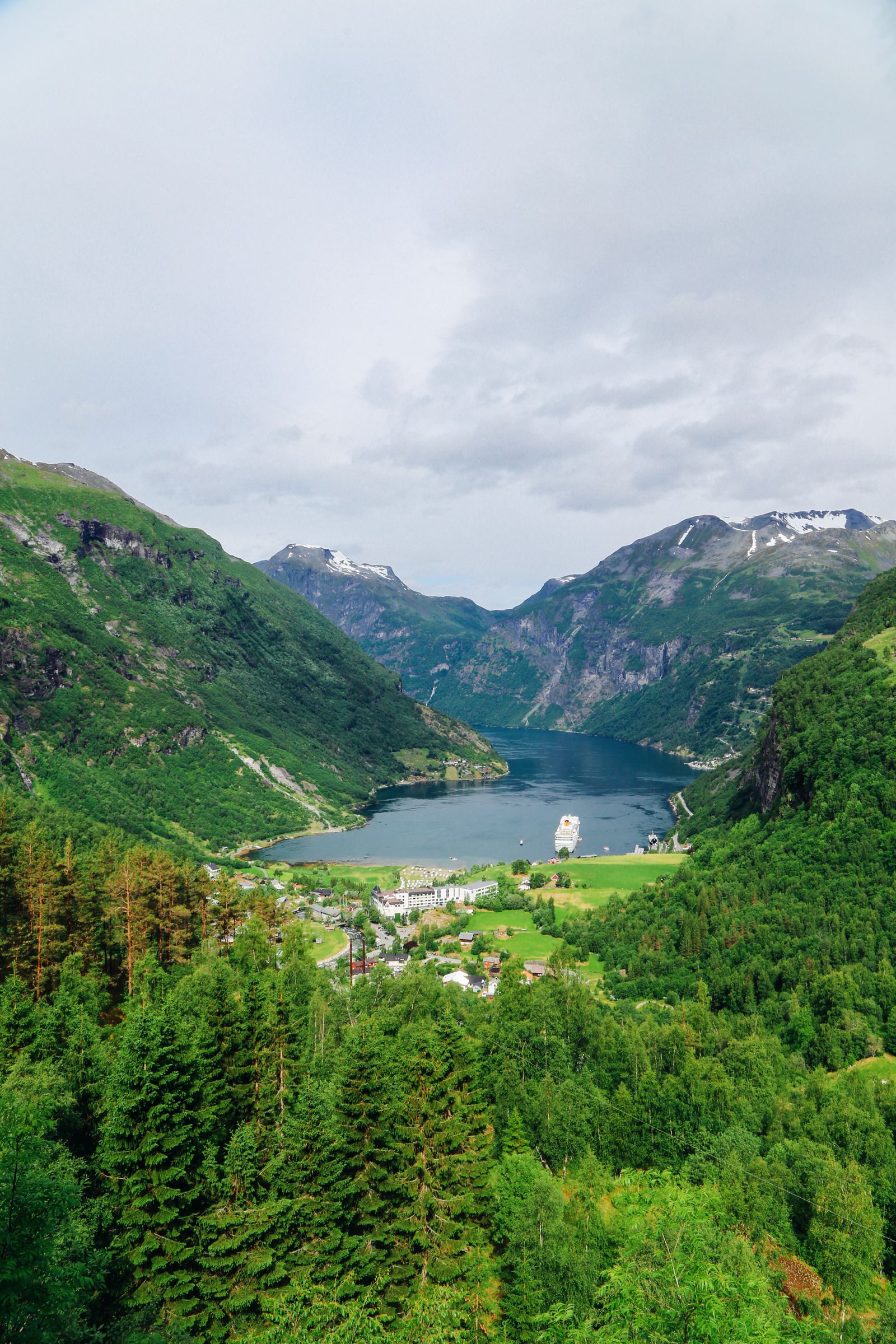After our day as beekeepers in Devon (still fascinated by those little critters), we headed out the very next morning (post-breakfast) to explore even more of Devon.
We made our way over to the seaside town of Ilfracombe, where we decided to hop aboard a boat to get a different perspective on this pretty part of Devon.
The coastline around here is a lot more dramatic than I anticipated and in fact, the Bristol Channel here (which spans across to Wales – you can literally see Wales from here) has the second highest tide range in the world (after the Bay of Fundy in Canada, which, coincidentally enough, we’d just visited a few days before).



You have to be careful when you’re exploring here as the tide rises and falls fairly quickly and quite dramatically so you don’t wanna be stuck out on a boat if you leave it too late to get back to shore or indeed, the reverse if you go off exploring on foot.
Thankfully, we set off fairly enough, and with people who actually know what they’re doing (they’re locals here) – Ilfracombe Sea Safari.



If you pick your days right, you can actually see dolphins, seals and even porpoises here. Alas, we didn’t see any of that stuff though, to be fair, we only went for the 1-hour ride so we didn’t really leave enough time to do so.
Back on shore, welcomed by a rather gory piece of art by Damien Hirst, we headed up the nearby hills to take in a different view of the area and indeed, of Ilfracombe.


The scenery from up and around this area is a lot more dramatic than I’d have even considered prior to visiting (and yes, I know I’m using that word ‘dramatic’ quite a lot here but it really does feel that way when you’re there.)



For lunch, we headed over to The Quay, a restaurant by famed artist, Damien Hirst.


Now you might not think art and food naturally go together (like I wouldn’t actively look for food at an art gallery or the best art in the world at restaurants) but this crossover is not a new theme for Damien Hirst.
Damien Hirst has always had a thing for food and having visited restaurants he’s been affiliated with (in London), we knew this would be a pretty great bet for lunch in the area… which, by the way, is actually where Damien Hirst is from.


As you can probably tell, the walls are covered with pieces of art from Damien Hirst himself.


We weren’t wrong about lunch though!



It was absolutely delicious, totally fresh and one of those meals where you almost high five each at the table for having made such an excellent choice. (If I do say so myself! 😆 *You’d think I made the meal myself with all this credit I’m giving myself).
Lunch done and with an extra spring in our step, we made our way over to Lynton and Lynmouth, a small seaside town with a cliff railway that’s apparently the world’s highest and steepest totally water-powered railway.


The view from said railway is definitely worth checking out when you’re in the village.
See, Lynmouth is the bit at the bottom and Lynton is the bit on top and when I initially found out about both, it felt like we would be visiting two very distinct places (and I guess in some ways they are) but it’s so easy to take the funicular/cliff railway up to Lynton and just walk down to Lynmouth.
Despite its incredible height, it’s a surprisingly fast walk!
I’d love to tell you we got up to some incredible plans when we were up here but in truth, our time here was pretty much just spend lazily mooching around the villages, stopping off for a drink, popping into the local church and trying to decide whether or not to get the fudge at the local sweet shop. Important business stuff, really. 😄


It’s funny (not ‘Haha!’ funny) but some of my favourite memories of time spent in the not just England, but in the UK, have been on lazy days like this. Days when you can just slow down and take things all in.
You’re just so much more relaxed, you notice stuff you wouldn’t otherwise and even little things like stopping for an ice cream seem way more enjoyable when you slow down enough to enjoy it properly.
As the sun began to set, we decided to bit the Lyns (Lynmouth and Lynton – though no one actually calls it the Lyns), farewell and head over to a spot that I’d been vaguely curious about.
Someone had mentioned visiting the Valley of the Rocks when we were here and seeing as I hadn’t googled it or done any real research prior, it was a spot I was pretty ready to miss out on entirely. (A valley of rocks just sounded like a slightly over-the-top way of simply saying ‘a valley’).
Boy am I glad we didn’t skip out on it though!
The Valley of the Rocks is an absolutely gorgeous natural beauty and is (yes, I’m gonna say that word again 😆) absolutely dramatic!
To get a send of how huge it is, look at the photo below and see if you can spot Lloyd (clue – he’s in the middle-left side of the photo).
Spotted him above? 😀
You can actually park your car here and head off on a walk around the edge – there’s a proper path and everything though I’ve got to say, if you’re not one for heights, you might find it a tad terrifying and butt-clenching on this walk (even though the path is fairly wide enough for you not to feel that way at all).
You might even spot some feral goats when you’re here! We saw them when we initially arrived and by the time we parked, they’re all disappeared without a trace (save for the tell-tale goat poo).
After a quick jaunt around the path, we decided to call it a day and head over to Minehead in Somerset, where we would be staying for the night.
It’s funny but at the time, I don’t think I realised it (I certainly didn’t plan for it) but this day had been entirely defined by England’s rugged, and often dramatic, coastline.
I just headed out looking for fish and chips (ended up not having that), seaside rocks (the kind you can eat – if you’re not British, it might sound strange but trust me, it’s a while thing when you’re by the seaside) and a jaunt across this pretty part of England but finding these dramatic cliffs, coves and hills kinda took me by surprise and make me want to spend even more time exploring Devon.
Check Out The Very Best Of Great Britain!













































